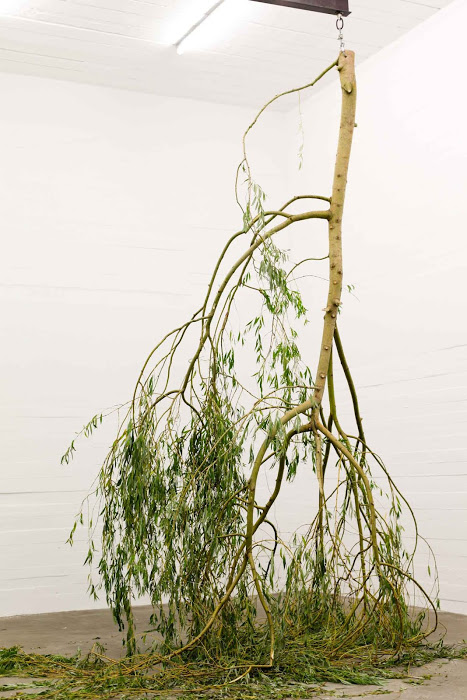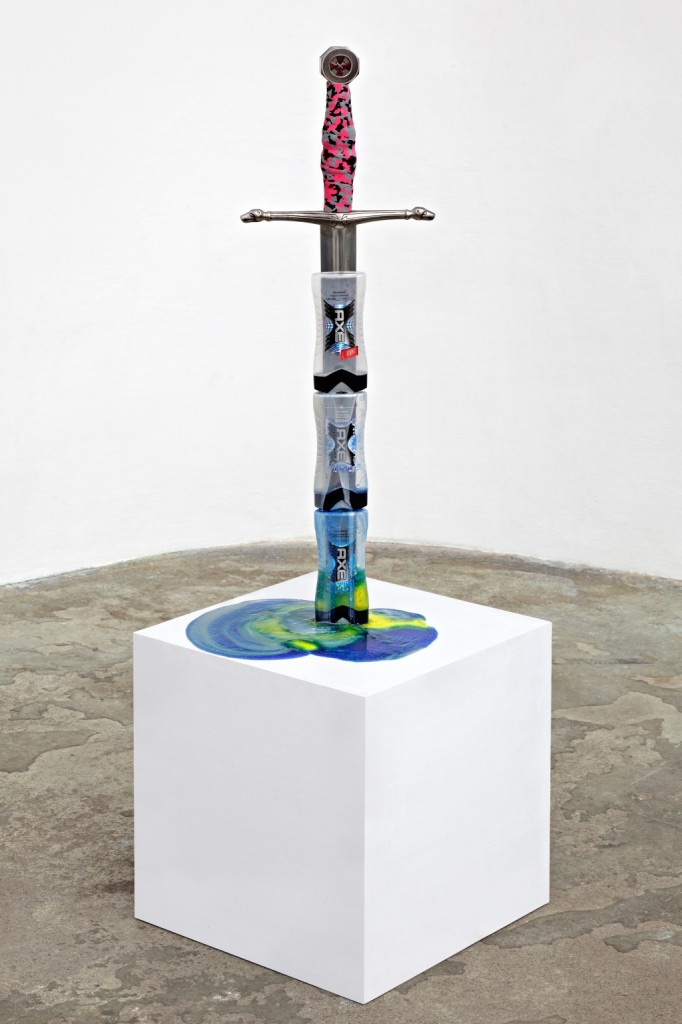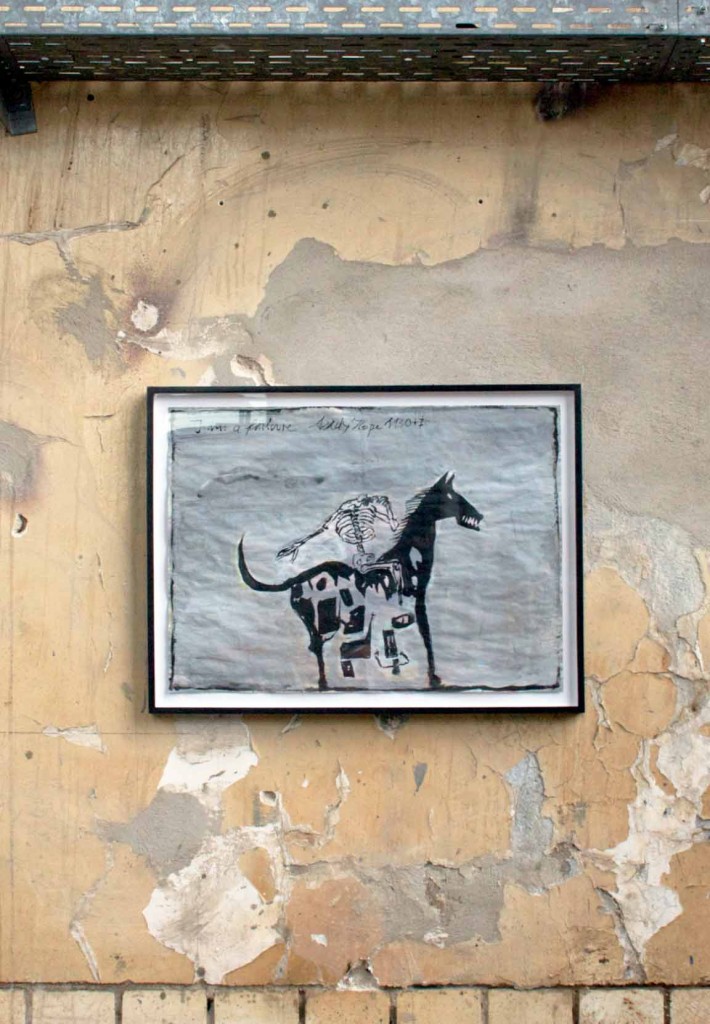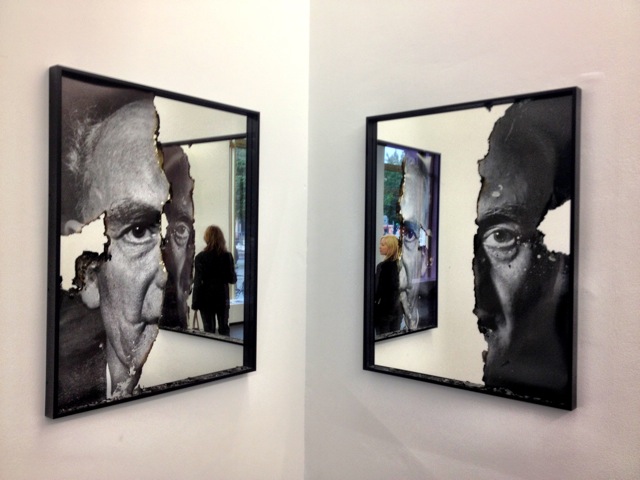
Michael Sailstorfer. “Forst (01),” 2010. Image courtesy www.stillinberlin.com.
I’m still trying to process Berlin Art Week, which took place mid-September all across the city, and which, by all accounts, was an amorously smooth event (descriptor borrowed from a 1970’s British cocktail book). Berlin, feral and yellow in all its autumnal glory, spewed forth not one, but four art fairs–and like a million gestating art happenings (rough estimate).
September also heralded the unveiling of the Boros Collection’s new exhibition, which is housed in a former Nazi bunker in Mitte. There was a certain bombast to the inaugural exhibition (opened in 2008), with blinking Eliassons, giant bells and disconcertingly sharp installations. The new show seems a bit more intimate, exuding a rustic charm that reads as oddly nostalgic given the bunker’s cool gray interior. Gone (mostly) are the YBA’s and in their place sit Berlin favorites like Alicja Kwade and Klara Lidén, whose Venice Biennale contribution “Teenage Bedroom” is one of the more prominent pieces on display.
If you couldn’t manage a ticket to see the Boros’ private collection (a likely scenario given the influx of art-eaters), there was still the hub of Berlin Art Week: The ABC art fair (Art Berlin Contemporary). With the dissolution of the Artforum Berlin fair, ABC is now arguably the biggest and saaviest fair, this time partnering with Miss Read and New York-based Artists Space to present artists books and performances alongside gallery booths. ABC stuck to the admirable model of single-artist presentations, which always compares favorably to the shock-and-awe visual tactics of more crowded fairs.
While it didn’t exactly offend, ABC seemed less adventurous than in years past. There were a lot of oversized prints, flags and emblems, sprawling meditative installations and ”wow, come look in here,” chambers. I felt wistful for my first ABC (2008), which was dominated by raggedly ambitious installations that felt like the rowdy cardboard spawn of Thomas Hirschorn and Richard Serra. At the end of the 2008 opening, there was even a night-capping performance by a masked Peaches.
*Or maybe, like all Berliners, no matter how new, I’m romanticizing a ruggedness that is gradually being erased, or perhaps never existed at all.

Timur Si Qin. “Axe Effect,” 2011. Courtesy of the artist.
Of course there were standouts at ABC, like Timur Si Quin’s Samurai sword impaled Axe bottles, which read as bizarre monuments to gendered advertising, or Florian Miesenburg’s tower of quirky, blinking paintings.
In the galleries outside of ABC, I encountered a surprising amount of good old-fashioned drawing and handicraft, works that engaged with a serious if not bleak physicality.
Kunsthandel Wolfgang Werner displayed a fascinating cultural excavation, pairing Ray Johnson’s drawings, collages and mail art with collages from Kurt Schwitters, allowing for an unexpectedly rich conversation between the two very different artists.
In an abandoned train repair station in Wedding, Held Art hosted an ambitious group show, the first to take place outside of Matthias Held’s apartment in Kreuzberg. Kitschy sculptures by Nicholaus List, and a sadly entropic drawing by Andy Hope 1930 had particular resonance in the overwhelmingly industrial space.

Andy Hope 1930. “I am a Failure,” 2012. Image courtesy of Held Art.
In Schoeneberg, the newly christened, photography-centric Galerie Kornfeld offered a suite of subtly colored videos and photographs from Sonny Sanjay Vadgama, a former BBC employee whose works deal in managed chaos with painterly flair.
Meanwhile, in a pristine, windowed space on the sprawling eastern thoroughfare of Karl Marx Allee, Anna Jill Lüpertz Art (AJLART) showed an almost entirely monochromatic group of artists who emanate a somber, poetic presence. The space was filled with the ashes of Marx and Hegel’s works (literally), and included a Ralf Ziervogel lightbox drawing that references natural phenomena through a serious of seemingly mechanized marks.
Organizing shows around architectural space rather than curatorial concept is a particular trademark of AJL Art. However, with Sublim Kursiv, the works do share a certain sobriety and earnestness, perhaps best exemplified by Douglas Gordon’s “Self Portrait of You + Me,” which slowly disintegrates in a corner to reveal a mirror. In a week of appearances and bluffing, it was nice at the end to feel “seen.”

Douglas Gordon. “Self Portrait of You + Me (Wilhelm Furtwängler 03)” and “Self Portrait of You + Me (Wilhelm Furtwängler 02)” Image courtesy of AJL Art Berlin.



